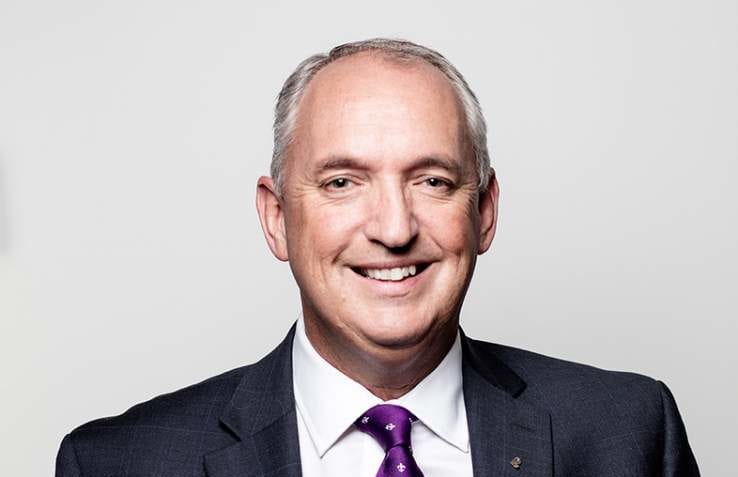Captain David Morgan has spent three decades flying the friendly skies and the Air NZ chief operations Integrity & standards officer takes us inside the cockpit.
Why do the window shades have to be up prior to take-off and landing?
So the cabin crew can see what's going on outside.
"If we have to make a decision about getting out of the aeroplane in a hurry the cabin crew can make that assessment."
When you hear "We're waiting on the paperwork", what is the 'paperwork'?
A load sheet with the flight plan, fuel calculations and confirmation of the weight of the aircraft and the position of its centre of gravity.
The latter is the reason passengers need to be in their original seats prior to landing.
"We've determined the position of the centre of gravity prior to takeoff, we've also worked out where it's going to be at the end of the flight and it has to stay within a set of prescribed limits known as the 'envelope'.
"Fundamentally, we are in the business of opposing the force of gravity."
Are pilots alcohol and drug tested?
They are random-tested by their own company and the industry regulator, but there is no mandatory testing before each flight.
Can planes land themselves now?
All Air New Zealand jets are capable of automatic landings when the airport has an instrument landing system – "two beams which come from the end of runway and side of the runway. One lines you up with the centre of the runway, the other one brings you down the correct trajectory to the ground" and the right lighting.
Automatic landings are now standard when visibility is low.
Why is the turbulence bad flying between NZ and Los Angeles?
"The weather between here and Japan is quite active, particularly a zone around the equator called the Intertropical Convergence Zone. It's where the two halves of the atmosphere meet and there's a lot of lifting in that area so you get these large thunderstorm type clouds, cumulonimbus clouds. We spend a lot of time thinking about how we're going to pick our way through that particular zone of the atmosphere. It's not a Los Angeles thing necessarily, it's flying from the southern hemisphere to the northern hemisphere... The atmosphere has rivers of air flowing through it – those are jet streams – and there's other layers of air that are moving all the time."
Is turbulence dangerous?
Only if you're not seated and belted in.
"The aircraft is extremely capable of withstanding turbulence – that is not the issue. The biggest hazard with turbulence is people moving around the cabin and getting knocked about."
How do pilots manage fatigue?
Pay attention to their circadian rhythms, fitness, eating well and choosing the right times to nap (in the onboard rest facilities that are provided for pilots and cabin crew on long-haul flights).
"You can certainly be tired… Thinking about when is the best time to get rest, how to manage acclimatisation."
Crew flying the Auckland - Los Angeles - London - Los Angeles – Auckland circuit usually don’t rest until they get to Los Angeles the second time.
"What we do is get through the London turnaround and get back to Los Angeles as quickly as possible, so you accumulate the fatigue, I suppose, until you get to Los Angeles and then it has to be dealt with at that point. You don't want to be in a situation where you’re in London and find yourself becoming acclimatised and it's difficult to turn around and head back in the opposite direction."
Any advice for passenger jet lag?
Eat healthily, stay hydrated and get sleep when you can.
"The power of the 25 to 40 minute power nap is quite high."
Has ever seen a UFO?
No, but plenty of shooting stars and a couple of other cool and rare sky phenomena
20 years ago on a flight between Rarotonga and Nadi Cameron I saw what is known as the Green Flash.
"In the evening you came across from Rarotonga to Nadi and the sun would go down…. The atmospherics have to be right and there's a point just after the sun has dipped below the horizon. There's a flash of green that envelops the atmosphere. Luckily enough we were watching for it, we thought 'I wonder if this is the night'. That was a thrill."
Once flying Hong Kong to Auckland across the Philippines, the aeroplane built up enough static electricity to create what is known as St. Elmo's Fire.
"The atmosphere was particularly energetic and we were flying in this cloud and building up this charge of electricity. You get, on the windscreens of the aircraft when it gets really excited, this plasma spark, like you see in the amusement arcades with the spark hitting the globe. This built up and it all started shooting out the front of the aeroplane for a few seconds, this purple ray. It was quite spectacular.”
What makes a good pilot?
Mindfulness and an ability to manage risk.
"People who are very mindful, who think, who not only can deal with the issue at the moment, the tactical issue but look a little more strategically at what the outcome is going to be a little bit further down the track… somebody who is very level, not prone to emotion particularly. We want people who are passionate, who can grow, who can change – because this industry will change – but we also want people who make considered decisions and will act upon those."
Do pilots stop flying when they retire?
Most get into flying because they love it so don’t stop after retirement.
"Very few guys lose the passion. When you stop flying commercially you'll see a number of guys out at the air field either flying their aeroplane or helping others take part in what's a wonderful thing to do."


